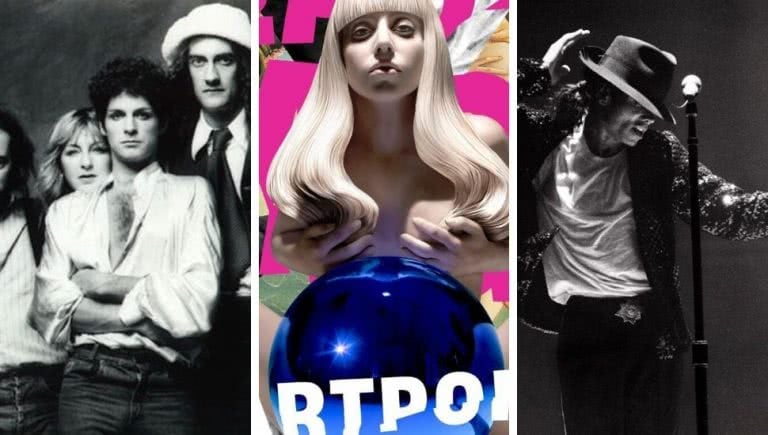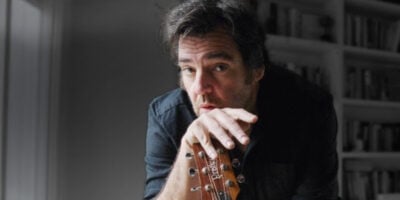Nothing tells an artist they’re loved more than when record companies give them carte-blanche on costs for their next record.
There are bizarre demands – from Kanye West demanding a glass enclosed mansion in Hawaii with two personal chefs to producer Mutt Lange spending the first ten days for AC/DC’s For Those About To Rock (rumoured cost for album: $1 million) trying to find the perfect snare drum sound.
Resident loonie Brian Wilson of the Beach Boys wanted an Arabian tent built in his house (at the cost of today’s $220,000 where he could eat snacks and take drugs) and also a sandbox with eight tons of sand in which he placed his piano so he could “feel the beach” with his toes when he composed songs.
Those in the superstar league can spend years making great art and paying for the experience.
The Beatles spent the equivalent of today’s £416,000 (or US$541, 367) on Sgt. Peppers Lonely Hearts Club Band and more than covered its costs, not to mention changing pop culture in many ways.
Def Leppard’s Hysteria (price tag $10.4 million) yielded massive hits like ‘Pour Some Sugar On Me’ and ‘Animal’ and sold 20 million worldwide.
Also pleasing the bean counters at their record companies were Korn’s Untouchables ($3.9 million), Kaye West’s My Beautiful Dark Twisted Fantasy ($3.25 million) and Metallica’s The Black Album ($1.81 million).
Love Music?
Get your daily dose of metal, rock, indie, pop, and everything else in between.
But there have been releases which been rock’s answer to the Titanic, which lead to record labels going bankrupt or executives getting sacked.
In no special order, here are 12 expensive album flops.
The Happy Mondays – Yes Please! (1992)
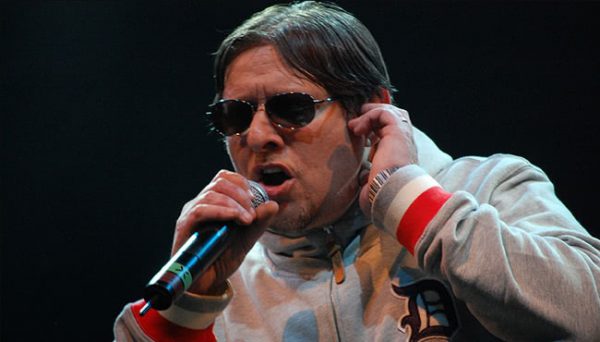
Former Talking Heads and Tom Tom Club member Tina Weymouth who co-produced Yes Please! remembered the sessions: “I grew up in New York in the 1970s, and I’ve seen a lot of people who live life on the edge.
“But I’ve never before seen a group of people who had no idea where the edge is.”
The money spent on Happy Mondays’ fourth album tipped their record company Factory over and sent it bankrupt.
Alarmed by the band’s E and smack intake, Factory head honcho Tony Wilson had packed them off to Barbados to record.
One problem with that bright idea: he didn’t realise it was the crack capital of the world.
Before the trip the Manchester band tried to kidnap The Smiths’ guitarist Johnny Marr to work on the sessions (“I was a Happy Monday for 25 minutes”).
Singer Shaun Ryder, a recovering addict, took enough methadone to last for four weeks but accidentally smashed them at the airport.
During the sessions when the money ran out, the band would sell furniture from the studio (owned by reggae star Eddy Grant) for crack – rumoured to be 30 rocks a day.
Band member Bez broke his arm overturning a hired car.
When the album was “finished” with an electro-synth approach which was totally different to their Madchester sound, Ryder withheld the master tapes from Factory until he was paid £50.
Wilson then discovered no vocals had been recorded as Ryder had not written any lyrics, so more money had to be invested.
To this day, in the chaos during and after the sessions, no one knows how much the record cost, but it would have been in the hundreds and thousands of pounds.
Melody Maker reviewed Yes Please! with just two words: “No Thanks!”
The album scraped into the Top 30 and yielded no hits.
According to label mate New Order’s Peter Hook, Yes Please! only sold 1,000 copies.
Two months after its UK release, Factory went belly-up.
A now cleaned up Ryder remembers the sessions as “a crack nightmare”…”dirty, horrible.”
Michael Jackson – Invincible (2001)

Michael Jackson’s sixth solo album through Epic/Sony – also his final one – certainly did the business.
Ten million sales around the world, #1 in 12 countries, including Australia where it was certified double Platinum. But this was wheesh meat compared to his previous achievements.
According to the Telegraph, Thriller has done 109 million worldwide, Dangerous 32 million, Bad 30 million, Off The Wall 20 million and HIStory 20 million (counted as 40 million units as it’s a double album.
In fact Invincible looked like it would be joining those powerhouses. It cost $30 million to make, with Jackson reportedly cutting between 50 to 87 songs, using different producers in ten studios.
Each day he booked three studios simultaneously (a very expensive exercise) because he didn’t know which one he’d feel like using until he woke that day.
Sony didn’t mind the huge budget: after all it planned to spend $25 million in marketing, to boost the sales figures.
Alas, the superstar and the company got into a squabble over who actually owned the early Jackson albums.
Jackson refused to tour, Sony responded by pulling its advertising dollars, and the album failed to cover its costs.
Lady Gaga – ARTPOP (2013)

Lady Gaga’s first two albums were massive sellers as she deftly combined songwriting suss and esoteric theatrics.
Seven years later, the critics are still divided as to whether ARTPOP was brilliant but misunderstood or just had a bizarre pretentious soft centre which her public was not impressed with.
But the panic button was pressed in its first week of release in the US, when only 260,000 fans gave it a home.
This was a 75% drop from the last album, which shifted 1.1 million units first week.
‘Applause’, the first single, went Top 5 but badly failed to hit top spot.
Interscope Records lost $25 million in marketing costs, and Examiner.com reckoned it caused staff layoffs at the company as a result.
Gaga had the last laugh. She moved to acting and jazz duets, and impressed with her performance in A Star Is Born.
The Darkness: One Way Ticket to Hell … And Back (2005)

After the runaway success of their debut album Permission To Land, The Darkness wanted to make an epic big-sound record.
Not surprising that when the British rock band met Queen’s epic-loving producer Roy Baker Thomas backstage at a show, sparks flew and a bromance developed.
“We were going for a huge, huge production sound,” Baker said, which meant trying out expensive techniques.
The spent a full year in the studio (at one point booking two studios), cutting 37 songs with nearly 10,000 separate tracks.
Some of the tracks on the final cut had 120 layers of guitar, with Dan Hawkins using 50 different guitars.
Some tracks had 160 vocal tracks, one time putting the mic in a champagne bucket to get a hollow sound. They installed the stage they used on the road in the studio.
For drum sounds, they’d try things like hanging up the bass drum halfway between the floor and ceiling or putting a kit out in the parking lot.
When one of the tracks needed a pan flute, it was decided that as a pan flute is not in the tempered scale, a new one had to be created in Peru from a number of them.
Not surprisingly, the budget clanged up to £1.3 million or $2.46 million in Australian currency.
It got mixed reviews, with Planet Sound noting its masculine themes and calling it the “world’s most expensive penis joke.”
One Way Ticket to Hell … And Back went up to #11 on the UK charts, but it most likely didn’t recoup costs and the band split up not too long after.
James Freud – Step Into The Heat (1989)

After leaving The Models to become a solo act again, Mushroom Records sent James Freud off for the best part of a year, and hired the expensive services of Chic co-founder Bernard Edwards.
Freud would later admit in his 2002 autobiography I Am The Voice Left From Drinking that his songs for the record were below par.
As Edwards and he continued to work at the Powerstation studio to try and derail the impending monorail wreck, costs jacked up.
Freud told this writer that he took to ducking phone calls from Mushroom head honcho Michael Gudinski in Melbourne to avoid telling him that costs had – with music videos – climbed to $750,000.
The album was a flop, and only one of its three singles made the charts.
If that wasn’t enough to dent his confidence, an argument with Countdown identity “Molly” Meldrum at a party went on to shatter it.
Freud had appeared on Countdown Revolution, the short lived “younger” version of Countdown, and expressed a criticism of the show’s format.
Meldrum and his cowboy hat hit the roof.
“You’re nothing but a fucking has-been. Look around you. See the new hosts of the show. They are the future of Australian music.
“You’re on your way out now!”
The argument took place on Freud’s 30th birthday, and he admitted he thought of himself as a has-been for a long time after that.
Fleetwood Mac – Tusk (1979)

After Fleetwood Mac’s Rumours sold 23 million at the time (now 45 million) their record company Warner Bros expected the follow up to be an even bigger baller.
The whole US music industry, going through one of its lows, also had the Mac pack in its sights, hoping it would be the sort of hit-laden radio-friendly blockbuster to get “da kids” back into the stores.
However, someone forgot to tell Mac guitarist Lindsey Buckingham who was running the show. His plan was a double album (warning alert) which would give Mac a place in the post-punk scene (double warning alert).
In other words, no Rumours 2.
He dug Talking Heads and even hunted down the Beach Boys’ legendary unreleased and experimental album Smile for further inspiration.
See the Making of Tusk video here.
The band built their own personal recording studio at Village Recorder in Los Angeles from royalties (Warner Bros refused to fund it) and set to work, brewing up 20 songs in ten months.
Tusk was so much Buckingham’s baby, that parts of it even recorded in his home studio.
“He was a maniac,” producer Ken Caillat described the guitarist’s obsessive behaviour during the sessions:
“The first day, I set the studio up as usual.
“Then he said, ‘Turn every knob 180 degrees from where it is now and see what happens.’
“He’d tape microphones to the studio floor and get into a sort of push-up position to sing.
“Early on, he came in and he’d freaked out in the shower and cut off all his hair with nail scissors. He was stressed.”
It cost $1.4 million (close to $5 million today’s rate) and was the most expensive album at the time.
Imagine the faces of Warner Bros executives when they sat in their board room listening to the record that was to make them their Christmas bonuses, and hearing ‘Tusk’ as the first single.
Tusk was well produced but the songs were sketchy and experimental, with just ‘Tusk’ and Stevie Nicks’ ‘Sara’ considered singles.
It only sold 4 million copies, and was considered a fail by the record company, foaming at the mouth.
In the blame game that followed, Buckingham pointed the finger at the RKO radio chain which played the album in full (allowing fans to tape it), and Warner Bros for pricing the 2 LP set in America at the top price of $16 (or $56.70 in today’s money.
Fleetwood Mac never tried anything as adventurous again.
After Tusk started sputtering they clawed back their fans to their bosoms by rushing out a live album and never strayed too far away from their classic-rock format.
Guns N’ Roses – Chinese Democracy (2008)

It wasn’t supposed to end up in tears before tea-time.
After all Appetite For Destruction was one of the greatest debut albums of all time and sold 28 million worldwide.
Use Your Illusion I & 2 sold 5.5 million each in the US alone.
So when Axl Rose declared he was making a Guns N’ Roses album “for the 21st century, and which would take the audience with him” and it would be ready by 1999, Geffen Records was all smiley-faced.
There were ten years of delays, and the revolving door of band members, managers, songs (60 to 80), producers (6) and studios (15) saw the cost-o-meter nudging $13 million.
Geffen offered Rose $1 million if he delivered the wretched thing by a certain time.
It then tried to offset costs by rushing out a greatest hits set into the marketplace, only to be slammed with an “oh no you don’t” lawsuit from Rose in 2004.
The singer lost the case and the hits album came out.
Exasperated beyond belief, Geffen pulled funding in 2005.
One estimate suggested that of the $250,000 a month budget the band was wasting $75,000 on renting gear that wasn’t used.
Studio rental was $50,000 a month.
Each band member was getting $11,000 a month, guitar technicians $6,000, the chief engineer $14,000, and the recording software engineer $25,000.
These guys basically just sat around waiting for Rose to show.
The talk is that with the coming of sudden and mega-success, Rose had freaked out.
He had wanted to make a perfect record but he was faced with demons, including fears there were forces working against him.
Chinese Democracy is a cool record. But by the time it came out, the audience had moved on, or the Gunners’ audience had split into the Axl camp and the Slash camp.
It got mixed reviews, came into the US charts at #3 and after a year had only sold 1 million in the US and 1 million in Europe.
When the original lineup reunited and toured (after which the album’s streaming jumped from 8 million streams to 24 million) you could sense the crowds thinking, “wow, Chinese Democracy would have been so awesome if it had been made by the original guys.”
The Rolling Stones – Their Satanic Majesties Request (1967)

Not to put too fine a point on it, 1967 was a stinker of a year for The Rolling Stones.
Drug busts, court appearances, a management split, and Keith Richards stealing actress Anita Pallenberg away from Brian Jones during a holiday in Morocco.
“We were all strung out,” Mick Jagger would admit later.
So not the best time to go into a recording studio.
But The Beatles had released Sgt. Peppers Lonely Hearts Club Band to high praise, so the Stones figured they should be shoving themselves back in the game.
Problem was, there were hardly any songs in the booty bag – except for ‘2000 Light Years From Home’ which Jagger wrote in prison, the ballad ‘She’s A Rainbow’ and the riff-laden ‘Citadel’ – and no producer to control the sessions.
Jagger and Richards ran loose as producers, and sessions went on unchecked, more psychedelic noodling than anything.
Bassist Bill Wyman recalled in his memoirs, “Every day at the studio it was a lottery as to who would turn up and what – if any – positive contribution they would make when they did.
“Keith would arrive with anywhere up to ten people, Brian with another half-a-dozen and it was the same for Mick.
“There were assorted girlfriends and friends. I hated it!”
After Decca Records refused the original idea of Jagger tied naked to a cross, the album cover was to be a 3D sensation where their faces would change direction if you tilted it.
But new manager Allen Klein (who had somehow struck a deal where he’d make more money than them) said it was too expensive, and shish-kebabed that idea.
It would emerge in later deluxe editions.
Their Satanic Majesties sold 2 million copies. Some Girls from 1978, by comparison, moved 11 million.
Jagger distanced himself from it in 1995, saying: “It’s not very good. It had interesting things on it, but I don’t think any of the songs are very good.
“There’s two good songs on it … The rest of them are nonsense.”
Andrew Ridgeley: Son Of Albert (1990)
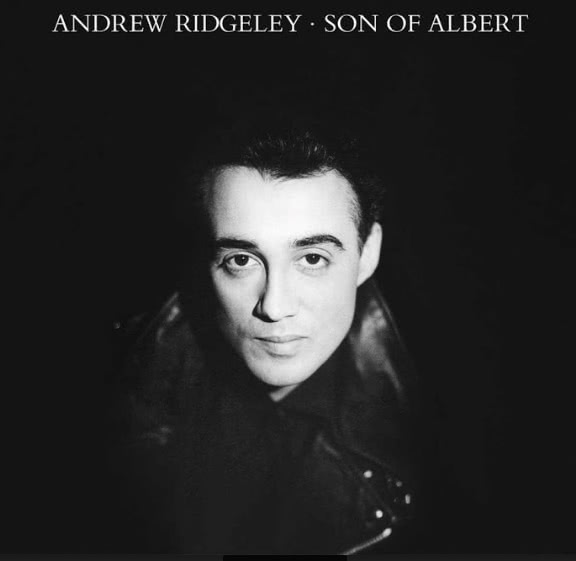
Once Wham! declared themselves Split City in 1986 after a final show in London before 72,000 fans, George Michael threw himself back into music.
Faith alone sold 20 million, almost equalling the total 28 million sales of Wham! over five years.
So Epic/Sony naturally expected great things from Georgie’s sidekick Andrew Ridgeley.
But first they had to wait until “Animal Andy” (as the Brit tabloids dubbed him for his partying antics in nightclubs and for being thrown out of the Live Aid after-party) moved to Monaco to make it as a racing car driver (nope!) and then to Hollywood to become an actor (nope! x 2) before he made a solo album.
No money was spared in promoting it, including one of the videos being shot in Australia.
Son Of Albert got the most savage reviews of all, for being totally inconsequential.
It flopped badly, and Ridgeley was never allowed anywhere near a studio again.
“It was disappointing and depressing to receive quite such a beating over that album,” he whimpered.
He didn’t have to worry too much. It is estimated that he makes up £10 million (A$18.8 million) each year from continued Wham! royalties.
Jet — Shine On (2006)

After Melbourne band Jet’s debut album Get Born – capturing all that was exhilarating about the renaissance of guitar rock – sold 4 million worldwide, the purse strings were relaxed for the follow-up.
Sessions were held in Barbados, Massachusetts and Los Angeles.
In an insightful interview in Songwriting Magazine, singer Nic Cester revealed that hard touring around the world exhausted and overwhelmed them.
They were too busy partying to write songs. And when they did, “It was a very difficult process, well I found it difficult, anyway.
“It was different. Our worlds had changed dramatically, obviously. But there’s a darkness over that album because our dad passed away (from a battle with cancer) just before writing began.
“It was very sudden and he was very young, not quite 50, so that whole album is very much shaded by that.”
Sales were well down. In Australia and the US where Get Born moved, respectively 660,000 and 1.7 million, the new one did 70,000 and 137,000.
Reviews were mixed. Pitchfork gave it 0 out of 10 stars and, instead of a review, posted a video of a monkey pissing into its mouth.
Garth Brooks – Garth Brooks in … The Life of Chris Gaines (1999)
https://www.youtube.com/watch?v=Rid5sE93axA
One of US country music’s biggest superstars, Garth Brooks, suddenly began sporting a long hair wig and affected an Aussie accent in the best ‘the dingo took mah baby’ tradition.
Actually Gaines was the character of a planned movie called Lamb about the problems that a rock singer faced with success.
Fans were confused, it sold just two million in the US (way down compared to his country efforts which did between 6 million and 7 million each) and irritated stores started discounting it within weeks.
The head of Brooks’ record company was sacked for approving the $5 million budget.
Steely Dan – Gaucho (1980)
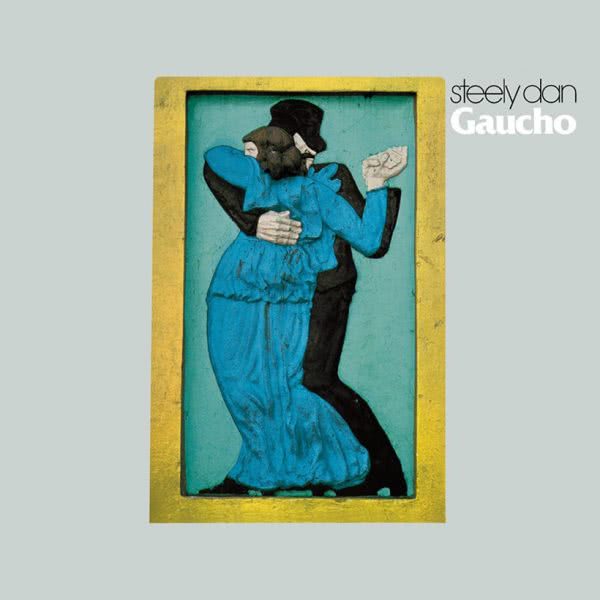
There’s good perfection and umm, bad perfection.
No less than 42 musicians were used on Gaucho by Steely Dan’s Walter Becker and Donald Fagen.
They complained they had to repeat the same riff from noon to 6 pm. The drums on the title track were assembled from 46 different takes.
Despite working with some of the best session drummers in the business, the picky pair decided to get engineer Roger Nichols to build a drum machine.
It cost $150,000 and six weeks to make. They later gave ‘Wendel’, as it was christened, its own Platinum record award.
Dire Straits’ Mark Knopfler was brought in and recorded for a few hours, and only had 40 seconds of his guitaring used.
The final mix to the 50-second fade out of ‘Babylon Sisters’ was completed on the 55th attempt.
Three quarters of ‘The Final Arrangement’ was accidentally erased by the engineer. They tried to recreate it but finally abandoned it.
Costs built up to $1 million or $3.2 million in today’s money.
That didn’t include the $1 million they paid jazz composer Keith Jarrett to quieten down after he grumbled that the track ‘Gaucho’ was too close to his ‘Long As You Know You’re Living Yours’.
The 37-minute Gaucho didn’t take two years to make just because of perfection and obsession. Before sessions began in New York, some lunatic ran over Becker one night, breaking his leg and putting him in hospital for six months.
Some of his contributions to the record were literally telephoned in.
His girlfriend died of a drug overdose in their apartment, and her family unsuccessfully tried to sue him for introducing her to drugs.
Becker had his own drug issues, which didn’t add to the problems.
“It wasn’t fun at all, really,” they said later of the album’s making.
Gaucho sold 1 million copies only in the US.






























